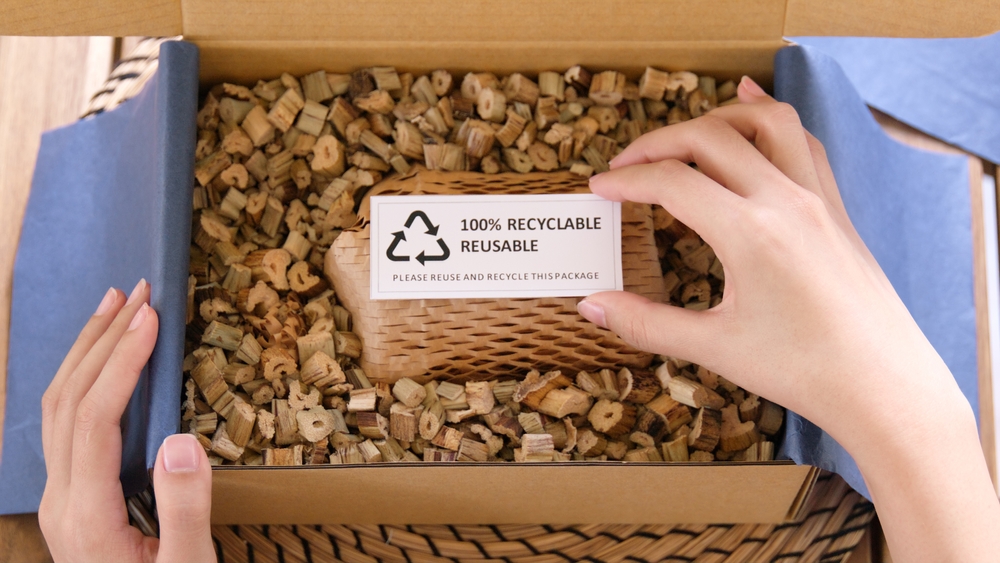The EU’s Packaging Waste Directive represents a pivotal moment in its approach to packaging sustainability.
We challenge the industry to innovate by mandating recyclable and reusable packaging. This shift could reshape consumer behavior and industry practices.
However, the meaning of these changes goes beyond compliance. How will businesses adapt to the new landscape? What cultural changes could emerge as reusability become the norm?
The end of a disposable? Within a bold shift to reuse and circulation in the EU
The introduction of Packaging and Packaging Waste Regulation (PPWR) shows a major shift in the European Union’s approach to packaging.
By highlighting the shift from a range of used products to reusable circulation systems, the regulations aim to significantly reduce packaging waste.
PPWR will set an ambitious target, mandating that all packaging is recyclable by 2030, and promote the use of minimum recycled content. Furthermore, certain single-use plastic restrictions reflect the EU’s commitment to sustainability.
Companies need to adapt their practices, allowing customers to use their own containers for take-out items without paying any additional fees. This bold change not only addresses environmental concerns, but also promotes cultural change towards sustainable consumption.
As the EU prioritizes circularity, its impact on manufacturers, retailers and consumers is profound and is potentially transforming the entire packaging industry.
From recycling to reuse: redefine what “sustainable packaging” really means
As the EU implements PPWR, the definition of sustainable packaging focuses on recycling and prioritizing reuse.
This change simply reflects a broader understanding that recycled materials are insufficient to address environmental challenges associated with packaging waste.
By highlighting reuse, the EU aims to reduce the amount of overall packaging produced and encourage a circular economy where products are designed for multiple lifecycles.
Currently, businesses are encouraged to adopt innovative strategies such as refillable containers and returnable packaging systems.
This redefined approach challenges manufacturers to rethink packaging designs, ensuring durability and functionality are used repeatedly.
Ultimately, the transition from recycling to reuse is not only consistent with the EU’s sustainability goals, but also sets precedents for global packaging practices, marking an important step towards a more responsible, resource-efficient economy.
Eco design at the core
With the implementation of PPWR, ECO design has emerged as a fundamental principle that guides the evolution of packaging requirements within the EU.
This shift highlights not only functional but sustainable packaging designs, and aims to minimize environmental impacts throughout the lifecycle.
The PPWR requires that by 2030 all packaging must be recyclable in an economically viable way, promoting a circular economy.
From material selection to waste management, requirements are becoming more stringent as regulations address the entire packaging lifecycle.
Certain goals for minimum recycled content have been established in 2030 and 2040, promoting innovation in material recovery and reuse. Additionally, single-use plastic restrictions underscore the EU’s commitment to reducing waste and promoting sustainable practices.
Navigate new compliance, costs and innovation
The implementation of PPWR is poised to have a significant impact on industry across the European market, presenting both challenges and opportunities.
Businesses need to navigate the increased costs associated with sustainable packaging innovations to adapt to new compliance requirements. Companies need to invest in research and development to meet the strict PPWR standards for recyclable materials and minimum recycled content.
This shift to a circular package not only requires financial investment, but also calls for cultural change within the organization and encourages a sustainability mindset.
Industry can face early hurdles when adapting supply chains and manufacturing processes. However, those who accept these changes can gain a competitive advantage.
Ultimately, PPWR will promote innovation, helping companies create more efficient and sustainable packaging solutions that align with the EU climate goals, while simultaneously increasingly increasing the market position in the greener consumer landscape.
Sectors facing the biggest package shakeup
Amid growing environmental concerns, various sectors, particularly take-out food services and e-commerce, have experienced major upheavals in packaging practices due to the imminent PPWR.
These industries rely heavily on disposable packaging and face harsh new requirements aimed at reducing waste and promoting sustainability.
For take-out services, regulations require customer containers to be accepted at no additional charge, driving the transition to reusable options.
Meanwhile, e-commerce businesses must incorporate recyclable materials to minimize excess packaging and adapt to PPWR’s goals of recyclables by 2030.
The transition to a circular economy requires both sectors to innovate and invest in sustainable packaging solutions, ultimately reshaping consumer experience and expectations.
As deadlines approach, these changes commit to redefine operational practices and ensure compliance with new regulations while addressing the urgent need for environmental responsibility.
What do I need to reuse the standard?
How can regulations effectively promote cultural change to reusability in societies that are used to convenience?
PPWR aims to change consumer behavior by embedding sustainable practices into daily life. By mandating that all packages are recyclable by 2030 and introducing incentives for reusable options, PPWR attempts to normalize the reusability of consumer choices.
A comprehensive public awareness campaign is essential to fostering this cultural change. These initiatives can educate consumers about the environmental impact of disposable packaging and the benefits of reusable alternatives.
Additionally, businesses need to adapt their practices and provide incentives to customers bringing containers.
Regulation alone cannot achieve lasting change. Collaboration between governments, businesses and consumers is required.
Ultimately, the success of integrating reuse into social norms depends on a consistent commitment to sustainability and the visibility of practical and accessible solutions.
The EU’s Packaging Waste Directive represents a pivotal moment in the transition to circular packaging systems, challenging industries to innovate and prioritize sustainability.
By mandating recyclability and promoting reuse, the directive aims to not only reduce environmental impacts, but also to promote cultural change among consumers.
As businesses adapt to new compliance requirements and embrace eco-design, this initiative can revolutionize packaging practices, ultimately contributing to a more sustainable and circular economy.
Source link

